Our Program
With almost 47,000 vessels registered within Broward County in 2022 and a year-round boating climate, intense pressure is placed on the County’s marine resources. Directly offshore are three coral reef tracts, with the outer reef located less than two miles from the coastline. Because of the proximity of the reefs to shore, damage to corals and associated benthic organisms is prevalent due to the deployment of boat anchors.
Since 1989, the Broward County Natural Resources Division (NRD) has worked with local conservation groups and the dive community to establish and maintain a successful mooring buoy program. The program started with the installation of 10 moorings at Barracuda Reef, located offshore of Dr. Von D. Mizell-Eula Johnson State Park. The success of this initial effort to protect the coral reef habitats from harmful effects of anchor damage led to the expansion of the mooring buoy system to other popular diving and fishing sites, and today Broward County oversees a system of 122 mooring buoys at 8 locations spanning from Deerfield Beach to Dania Beach.
In addition to providing properly installed and well-maintained moorings for the boating public, the NRD also strives to educate boaters about the correct way to use the moorings. The long-term goal of the mooring buoy program is to lessen the harmful effect of anchor damage on coral reef resources.
Florida Law
The Florida Reef Tract spans 358 miles, from the Dry Tortugas to the St. Lucie Inlet. To help protect our coral reefs, in 2009 Florida passed the Florida's Coral Reef Protection Act (CRPA) making it illegal to anchor or otherwise damage coral reefs. The CRPA also authorizes the Florida Department of Environmental Protection (FDEP) to pursue fines and compensations for any damage to the reefs.
Mooring Buoy Locations
Deerfield Beach
| 10
| 26° 18.412' N
80° 04.977' W
|
Pompano Drop-Off (North)
| 11
| 26° 13.725' N
80° 04.957' W |
Pompano Drop-Off (South)
| 31
| 26° 12.693' N
80° 05.078' W
|
Hall Of Fame
| 9 | 26° 11.546' N
80° 05.074' W |
| Anglin's Ledge | 11 | 26° 11.353' N
80° 05.241' W |
| Oakland Ridges | 15 | 26° 09.276' N
80° 05.072' W |
| The Caves | 10 | 26° 07.631' N
80° 05.354' W |
| Barracuda Reef | 25 | 26° 04.575' N
80° 05.505' W |
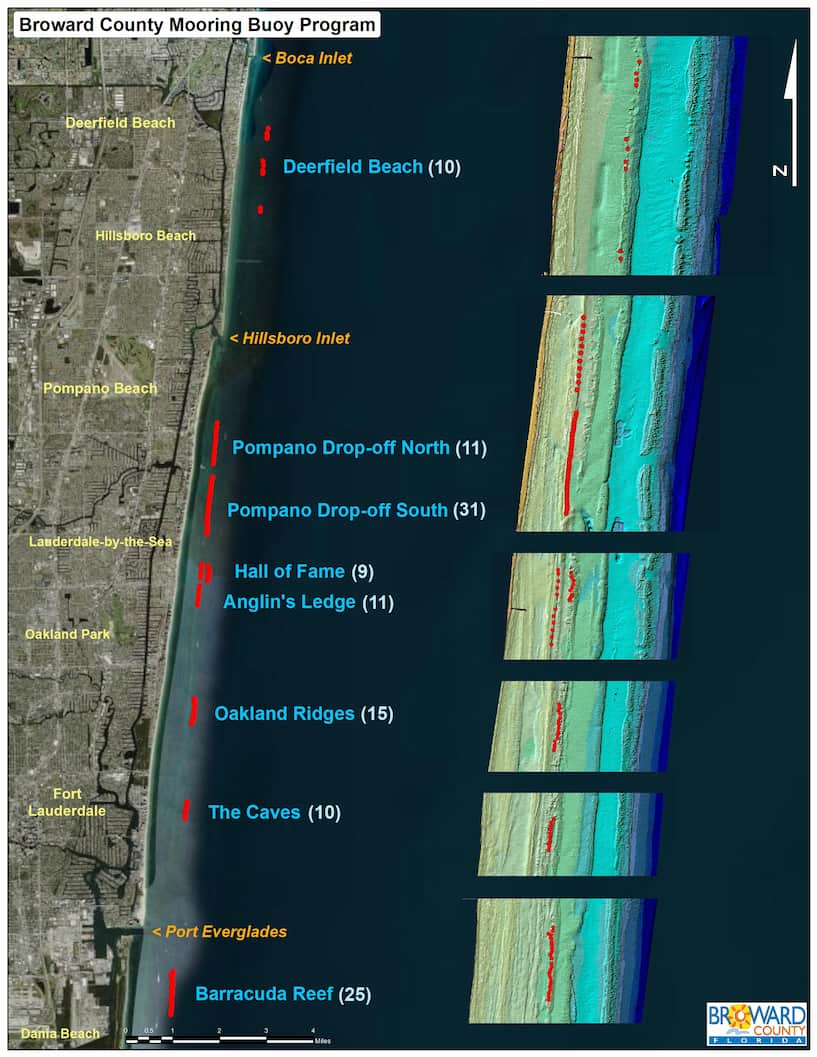
You can also refer to the FDEP Coral Reef Conservation Program's interactive map to find mooring buoy locations, as well as sandy areas that are suitable to anchor in if no mooring buoys are available. The map can be found online and/or by downloading the free ESRI ArcGIS Field Maps mobile app and searching for "Florida's Coral Reef Locator". The app uses GPS to show your vessel’s position and distinguishes between sand and coral reef areas.

The Buoy
The mooring buoy design is simple. Each mooring consists of three interlocking sections of floating line: the pick-up line, buoy through-line, and down-line which is shackled to a stainless-steel "U" shaped anchor cemented into the sea floor. The moorings are strong, but are only designed to be used by small to medium size boats, up to 60 feet (18 meters) in length, in relatively calm weather.
Caution: Using buoys in rough weather may result in damage to the vessel.
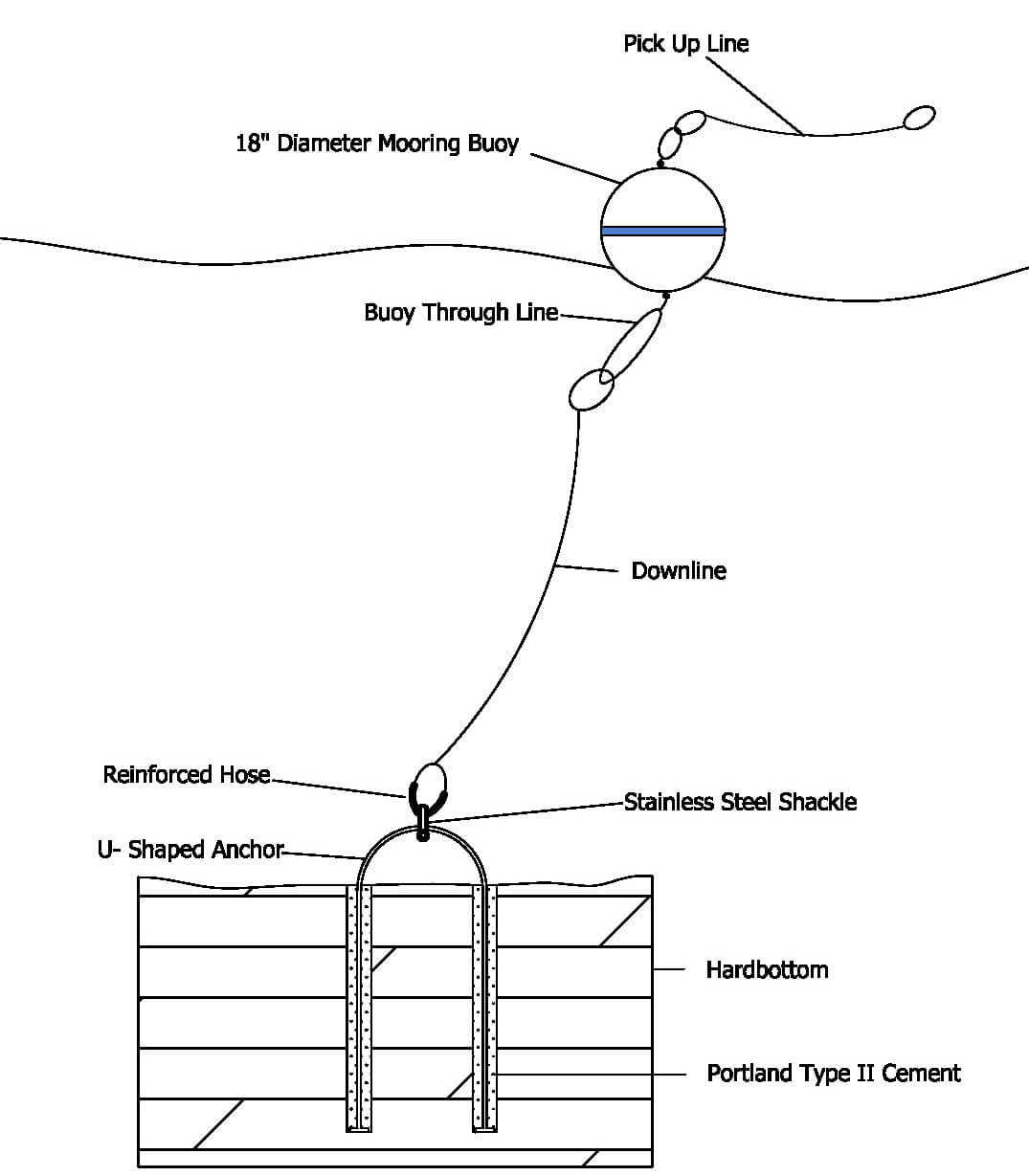
Using the Buoys
The following steps demonstrate how to use the buoys correctly. Following these steps will help make your trip to the reef safe and more enjoyable.
Preparation and Approach:
- Have your boat hook and bow-line ready.
- Maintain idle speed when approaching and maneuvering around the mooring buoy area.
- Watch out for swimmers, snorkelers, and divers (dive flags) while approaching.
- Carefully approach the buoy from downwind or downcurrent.
- Inspect the buoy as you approach. Make sure the mooring is in good shape before you tie off.
Step 1: Retrieve the floating buoy pick-up line with your boat hook.
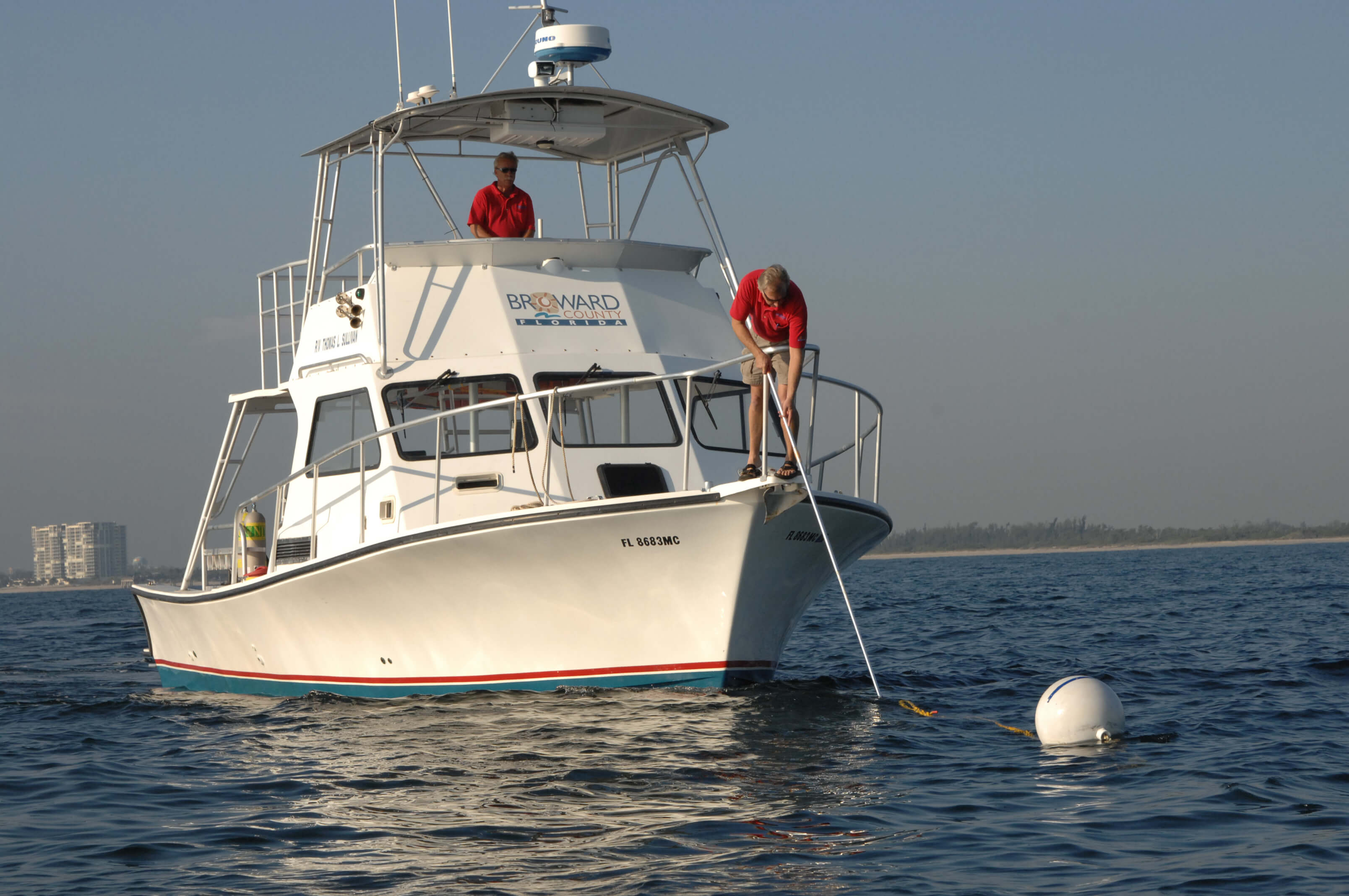
Step 2: Pass your bow-line through the eye of the pick-up line and tie to the bow cleat.
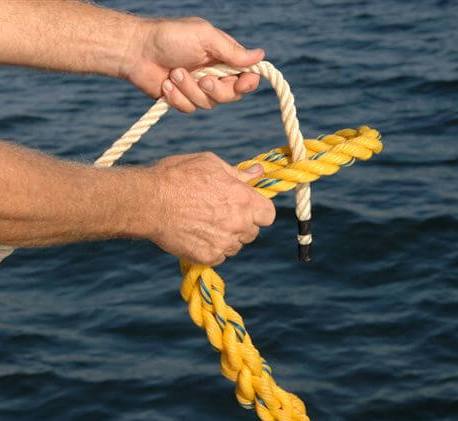
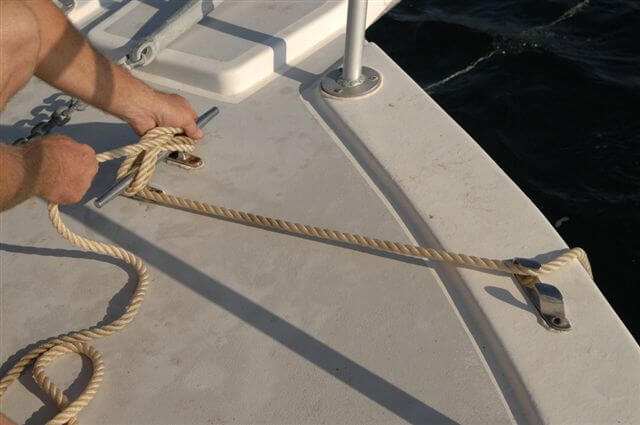
Step 3: Put out sufficient scope and cleat both ends of the bow-line securely to the bow of your boat. It is important to put out additional scope in rougher weather.
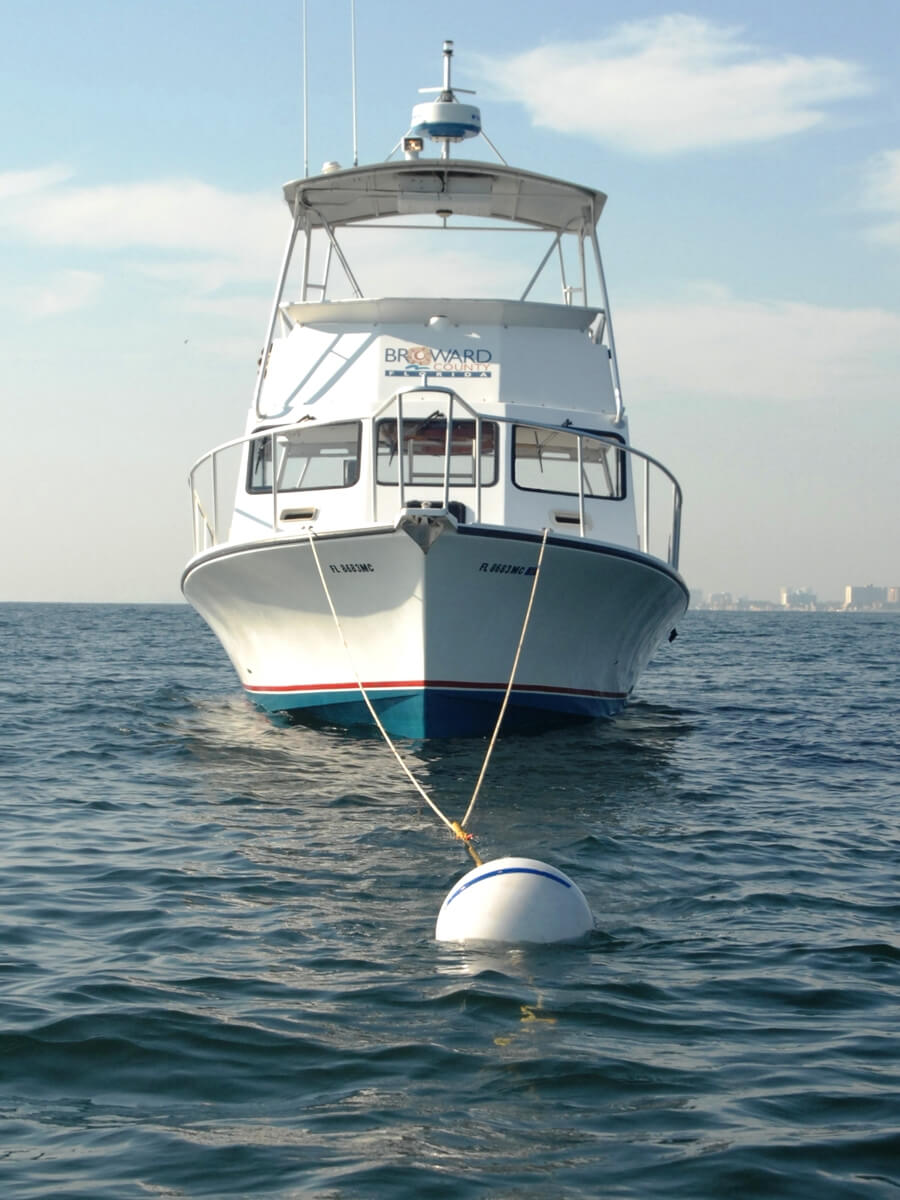
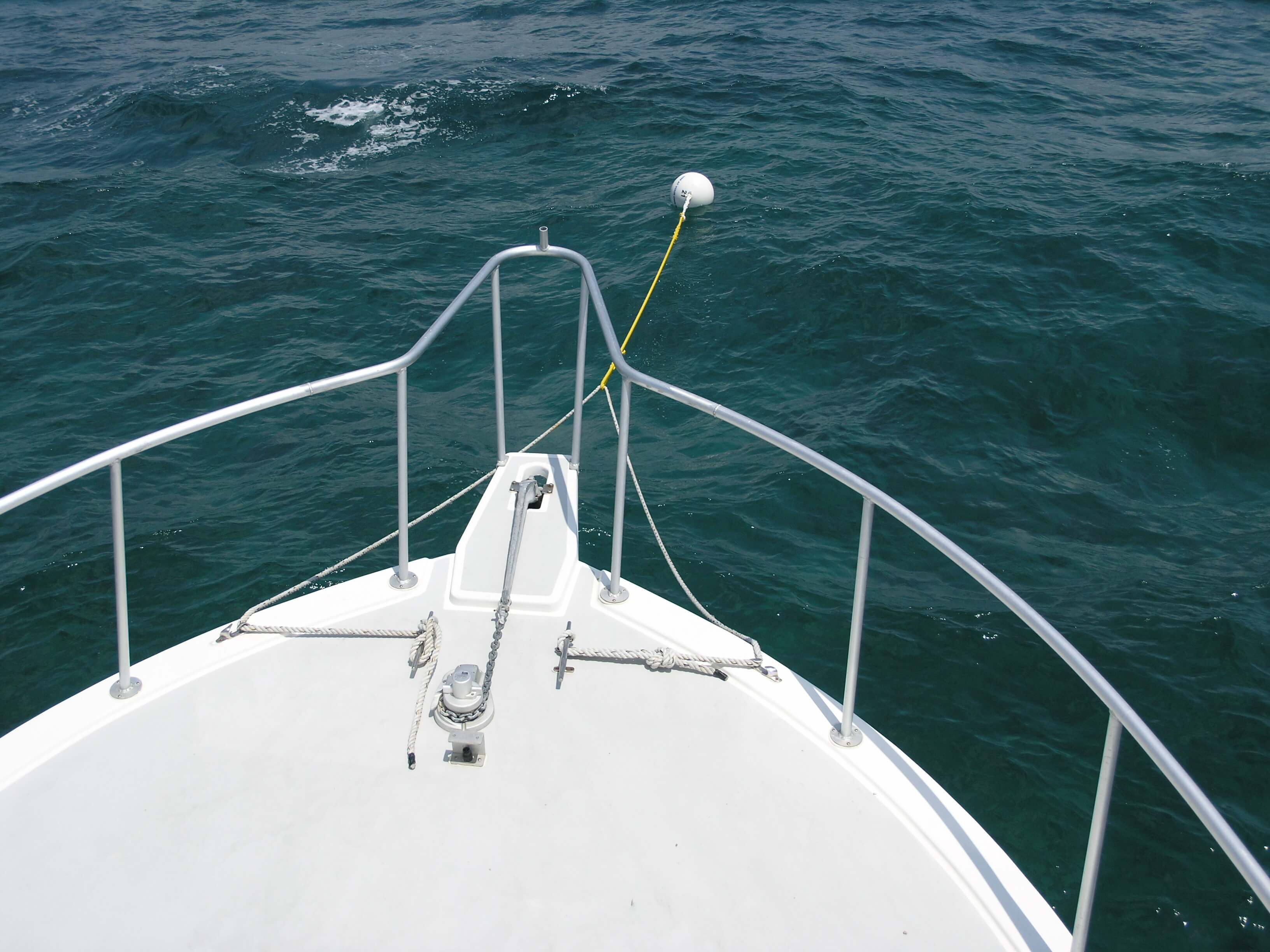
Leaving the Buoy:
- Release one end of your bow-line and let it slip free of the pick-up line.
- Retrieve your bow-line and maneuver slowly until you are clear of the buoys and other boaters.
- Maneuver cautiously while leaving the area to avoid swimmers, snorkelers, and divers.
Additional Tips:
- A qualified boat operator should always remain onboard the vessel when moored. As the boat operator, you are responsible for the safety of your boat and passengers at all times.
- Sailboats should not leave sails up as it puts additional strain on cleats and buoys.
- Never attach the mooring line to a stern cleat to moor stern-first into the current.
- If all buoys are taken, make sure to anchor on sand, not on the coral reef! Use FDEP’s Florida Coral Reef Locator map to help you find a suitable place to anchor.
Caution: Never tie your boat directly to the mooring buoy pick-up line as this can damage your vessel and the mooring buoy assembly. Use a separate bow-line as shown above!
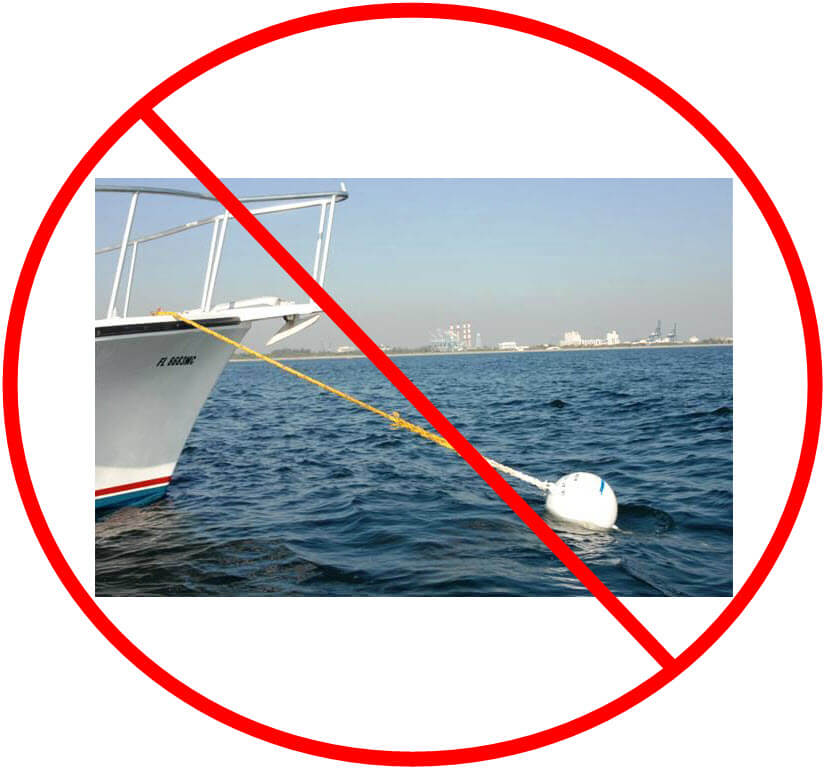
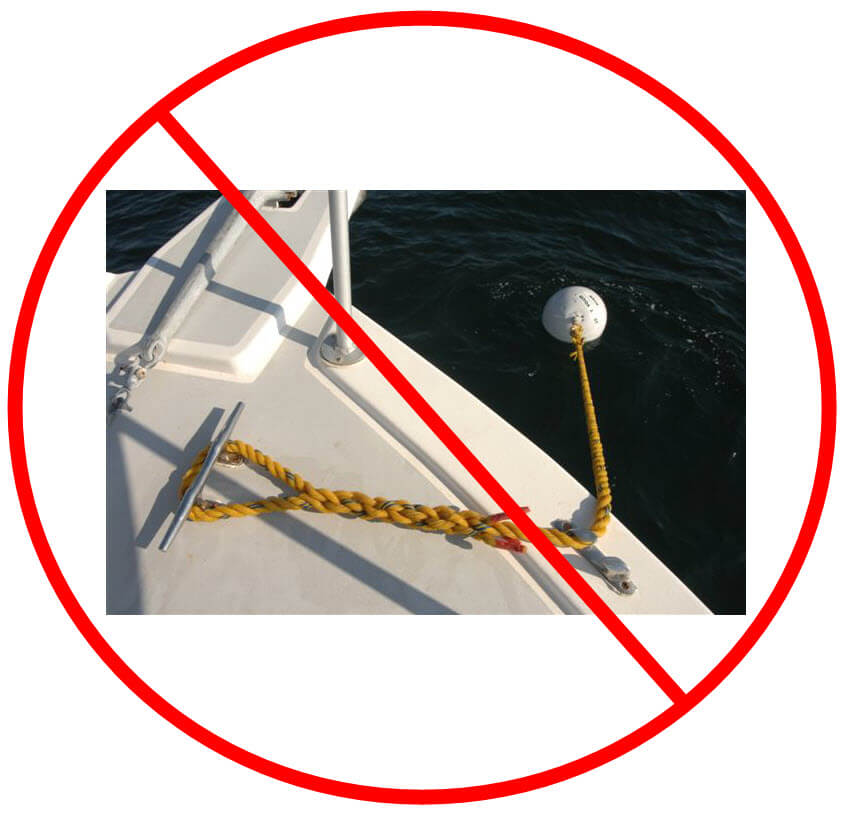
Program History
1989: Broward County assisted the Ocean Watch Foundation and local dive businesses to obtain Federal, State, and local permits to install 10 mooring buoys at Barracuda Reef.
1990: Broward County obtained permits and installed 10 additional buoys on Barracuda Reef and 30 in Pompano Beach.
1993: Florida Fish and Wildlife Commission’s (FWC) Florida Boating Improvement Program (FBIP) awarded a grant to expand our program and add buoys on popular diving and fishing sites like The Caves, Oakland Ridges, Hall of Fame, and Anglin’s Ledge.
1997: Broward County installed 10 additional mooring buoys at Anglin’s Ledge.
2002: The National Oceanic and Atmospheric Administration (NOAA) Coastal Impact and Monitoring Program (CIAMP) awarded a grant to install additional anchors for buoys at Pompano Beach and conduct a mooring buoy effectiveness study.
2007: National Fish & Wildlife Foundation awarded a grant to place buoys on the CIAMP anchors and print mooring buoy information brochures.
2011 & 2013: FDEP Coral Reef Conservation Program (CRCP) awarded a grant to purchase mooring buoy supplies.
2018: Broward County NRD completed the
installation of 10 mooring buoys between Hillsboro Beach and Deerfield Beach. NRD was awarded a grant from Florida Fish and Wildlife Conservation Commission
Florida Boating Improvement Program.
2020 & 2022: FDEP CRCP awarded a grant to purchase mooring buoy supplies.
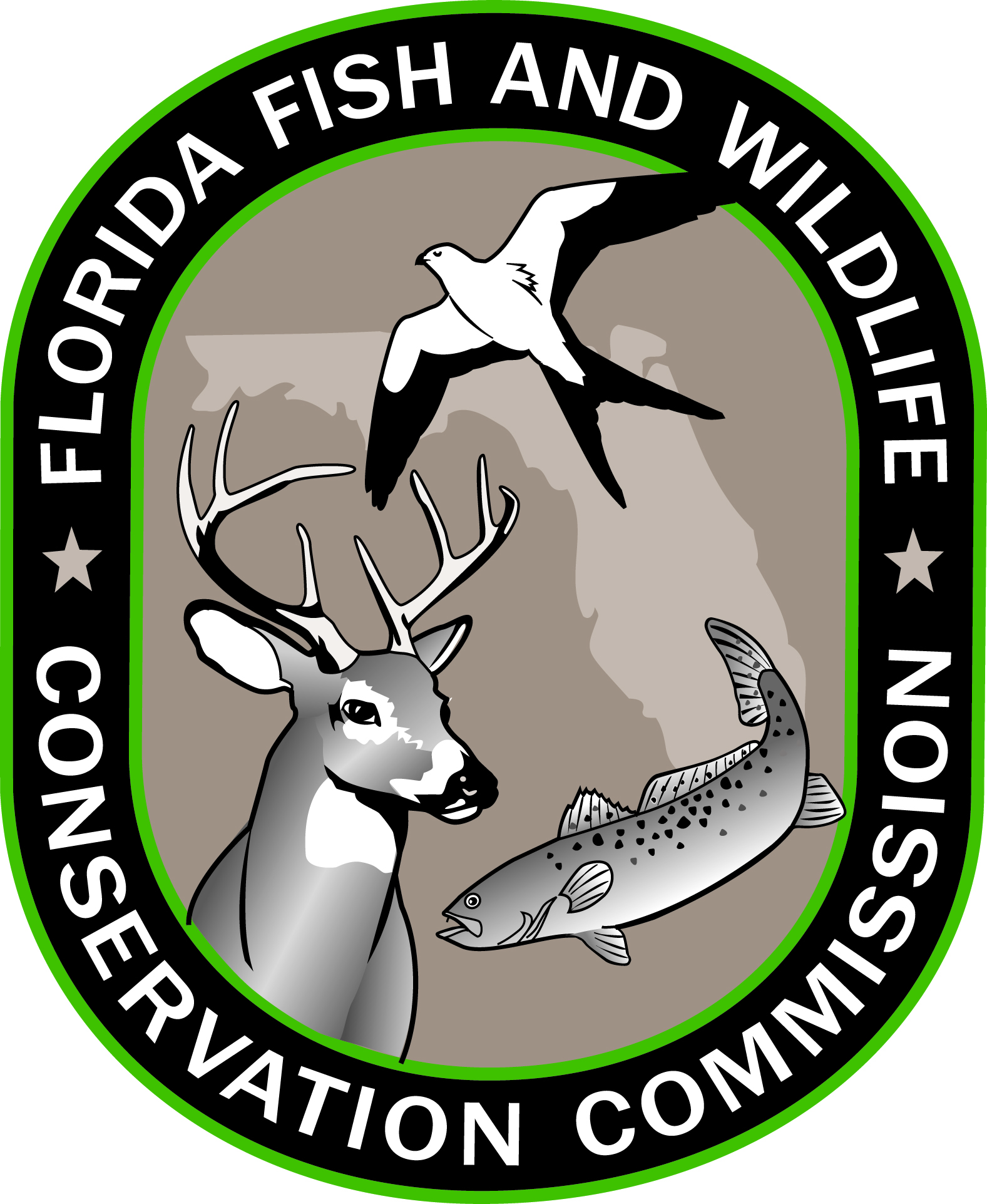
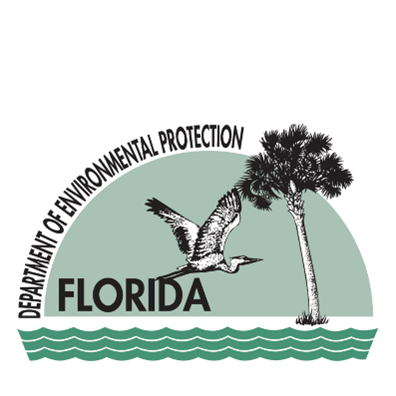

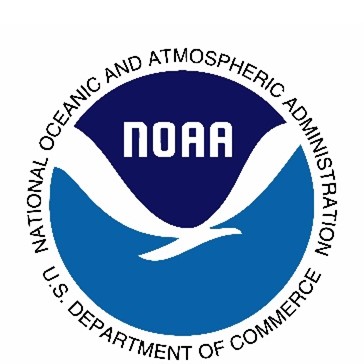
Report a Buoy Problem
Broward County mooring buoys are maintained by the Natural Resources Division. For more information or to report a problem concerning the buoys, please call 954-519-1270.
Broward County assumes no responsibility for use of the buoys.
